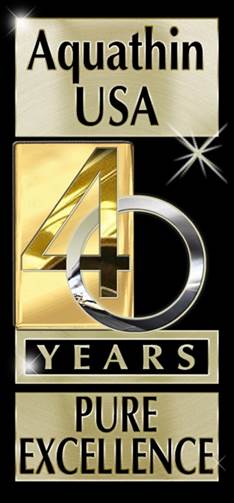Study: Low levels of pesticides found in water
"Aquathin OP-ED Commentary"
Please see the quick read article below concerning the wide range exposure to pesticides. It is interesting (I really mean disturbing) how the article whitewashes over the common sense of the real problems which are:
(A) We deserve clean water and no level of any pollution is acceptable. Staying within the MCL levels simply reduces the potential risk to cancers.
(B) These concentrations are a result of a new study for what has been leaching for upwards of 50 years. We know that from previous studies it is commonplace for these concentrations to increase as time and more fertilizing continues.
Study: Low levels of pesticides found in water
WASHINGTON — A pilot study of pesticides in drinking water reservoirs done by the US Environmental Protection Agency (EPA) and the National Water-Quality Assessment program (NAWQA)
found some common pesticides, but not in levels that were dangerous, the US Geological Survey (USGS) said.
USGS reported on the two-year study begun in 1999, which it said was conducted as a first step in a long-term goal of characterizing human exposure to pesticide residue in drinking water derived from surface-water sources.
The pilot monitoring program was initiated by the USGS and the EPA to provide information on pesticide concentrations in drinking water and to assist in the implementation of the Food Quality Protection Act of 1996. Water utilities that draw water from reservoirs were sampled because reservoirs are vulnerable to pesticide contamination, integrate pesticide loading from their watersheds, and show smaller temporal variations than streams, USGS said.
Twelve water-supply reservoirs were sampled, ranging in size from 120 to 92,600 acre-feet normal capacity, with contributing watersheds ranging from 3.3 to 784 square miles. The sites are in California, Indiana, Ohio, Oklahoma, Louisiana, Missouri, South Carolina, South Dakota, New York, North Carolina, Pennsylvania, and Texas. In 1999, drought conditions affected parts of the eastern United States and California; therefore sampling was extended through 2000 at nine sites.
None of the pesticides were detected in finished water at a concentration greater than a national drinking-water criterion, such as a Maximum Contaminant Level or Health Advisory Level, USGS stated.
Sampling frequencies were designed to measure long-term mean and short-term peak concentrations of pesticides in drinking water, the agency said. Samples were collected quarterly thoughout the year and at weekly or bi-weekly intervals following the primary pesticide-application periods. Water samples were collected from the raw-water intake and from the finished drinking-water tap prior to entering the distribution system. At some sites, samples were also collected at the reservoir outflow.
Analyses for pesticides in water samples were performed at the USGS National Water Quality Laboratory in Denver. Of these, 108 compounds were detected in at least one sample from a raw-water intake or finished-water tap. Many of these compounds, however, were detected in fewer than 5 percent of the samples and at concentrations very near the method reporting level, the report said.
Widely used herbicides including atrazine, simazine, metolachlor, prometon, cyanazine, 2,4-D, tebuthiuron, and acetochlor were the most frequently detected pesticides in both intake and finished water samples. Detection frequencies for these compounds ranged from 35.6 to 96.3 percent in raw-water samples and from 18.7 to 95.6 percent in finished-water samples, USGS said. Four triazineherbicide degradation products also were detected in more than 60 percent of all samples.
Diazinon and chlorpyrifos were the two most frequently detected insecticides in raw-water samples, with 35.3 percent and 5.3 percent detection frequencies, respectively, said USGS. Neither of these insecticides were detected in finished water.
Malaoxon, the principal oxidative transformation product of malathion, was detected in 11 finished-water samples and none of the raw-water samples. In three of the samples where malaoxon was detected in finished water, the corresponding intake sample showed measurable concentrations of malathion. Diazoxon, the principal oxidative transformation product of diazinon, was not included as an analyte on any of the three methods used in this study, said USGS.
FOR THE BEST TASTE IN LIFE
Think Aquathin...AquathinK!!
Edited from Tech Bank 1/17/02


